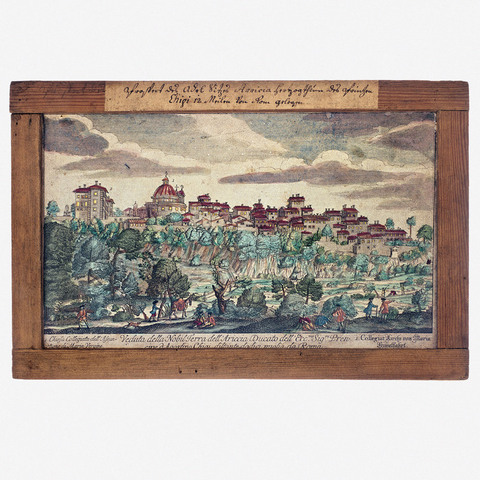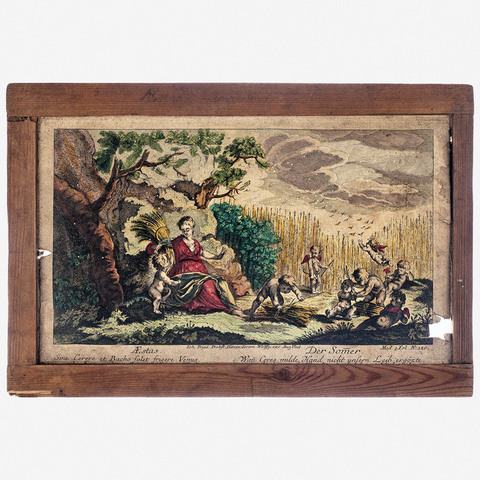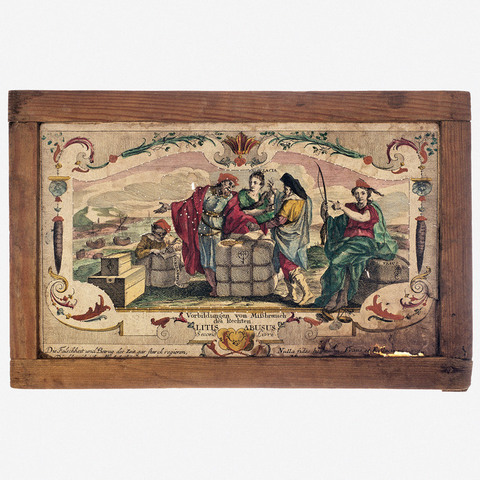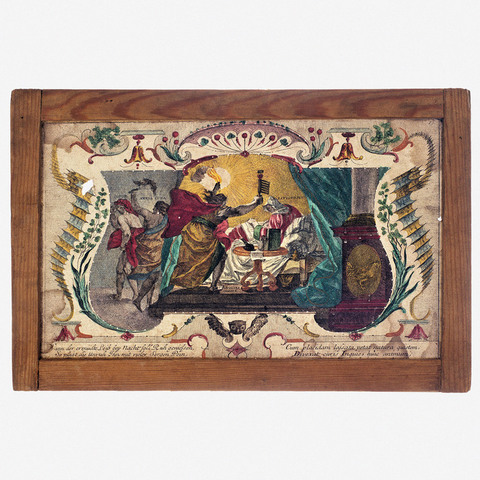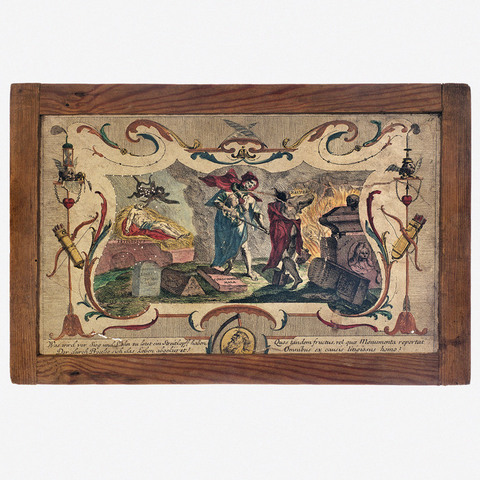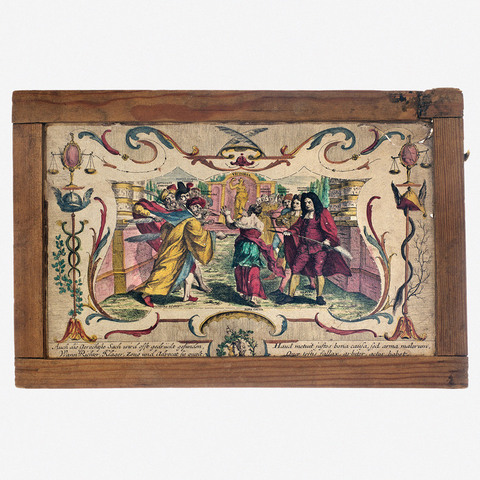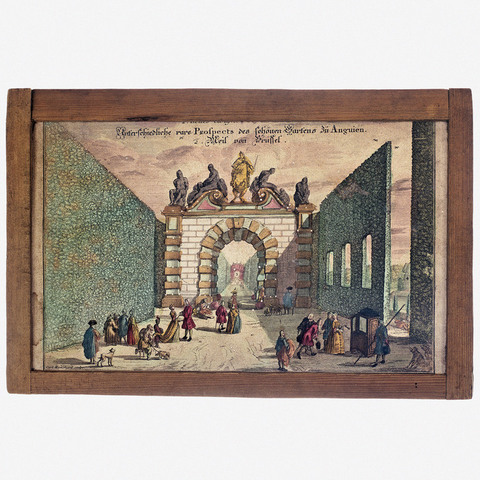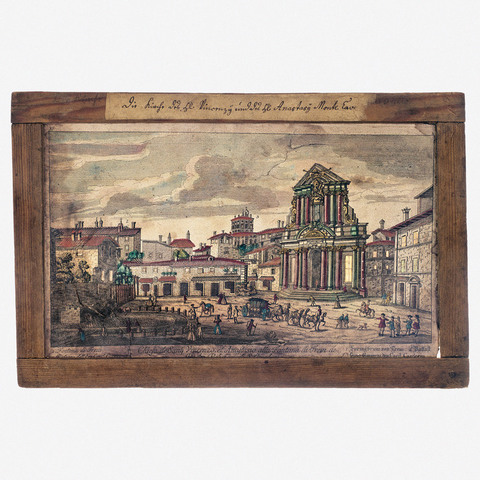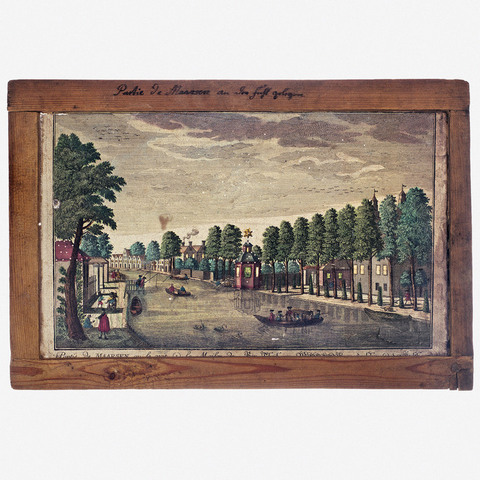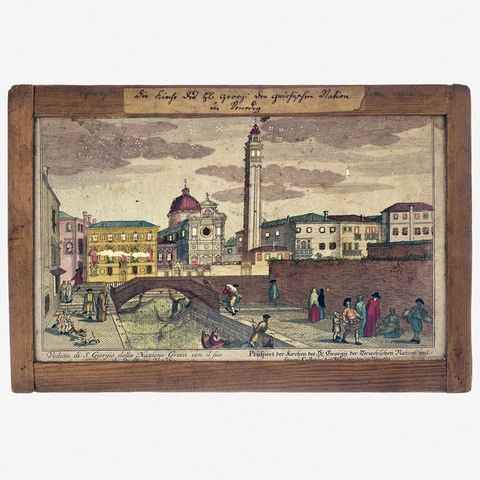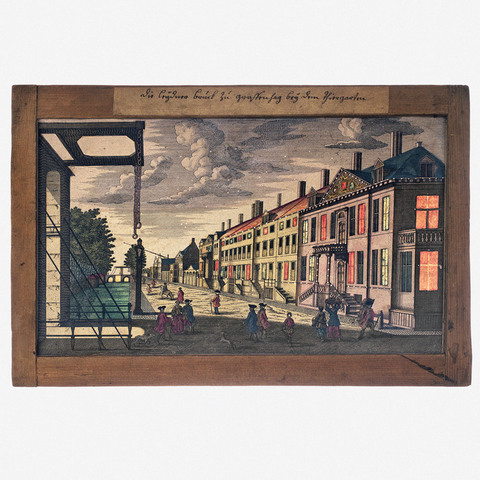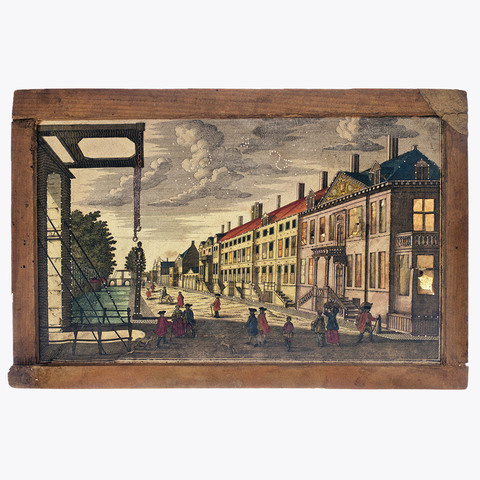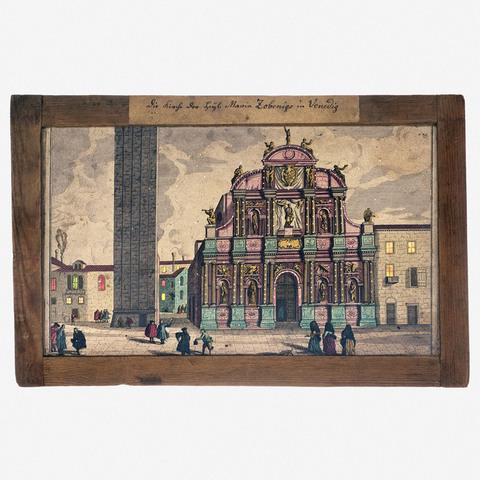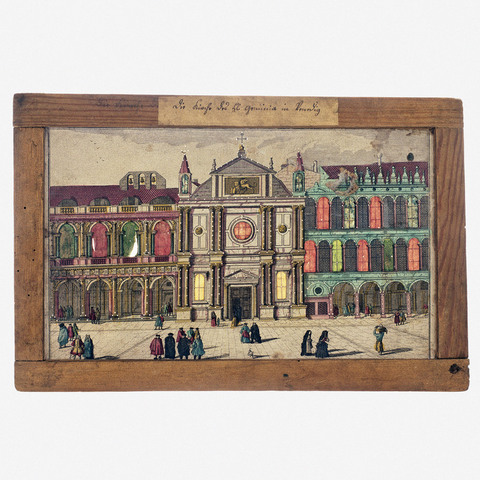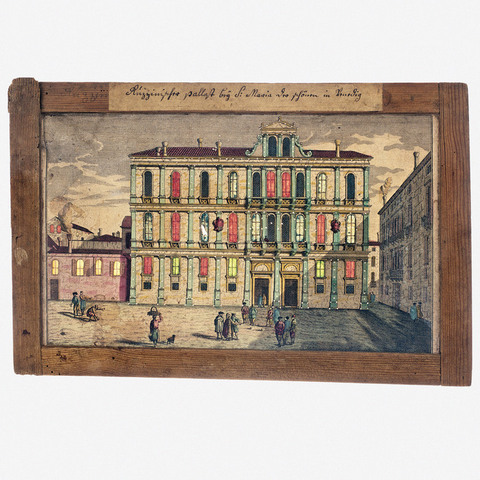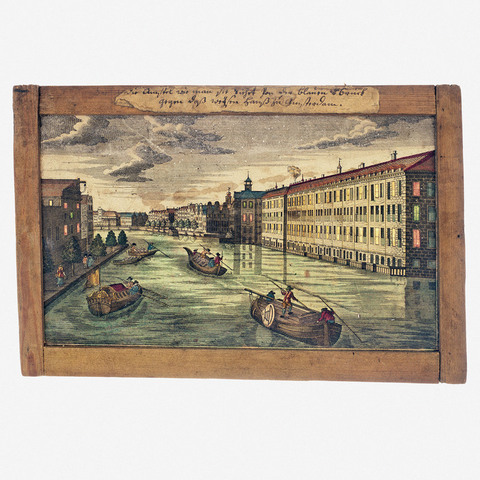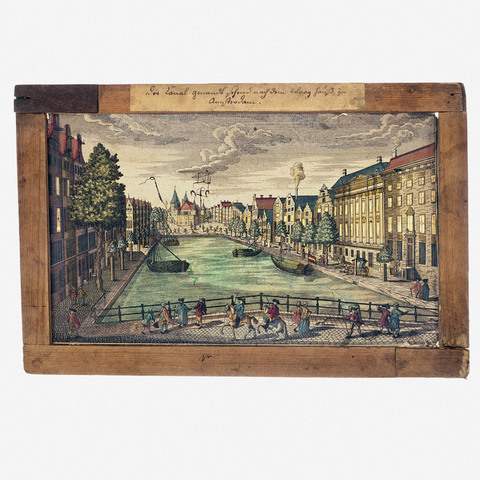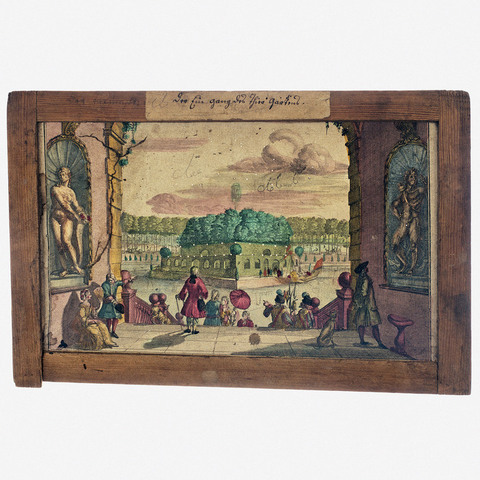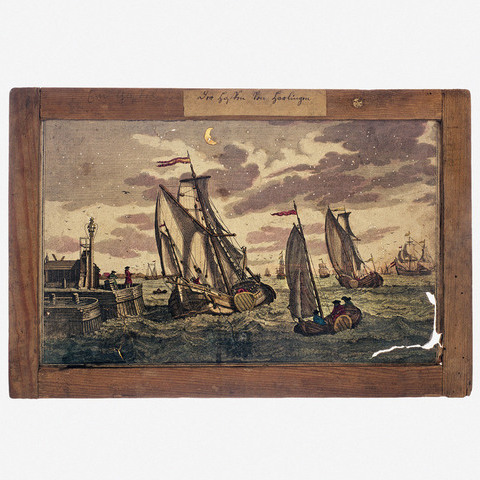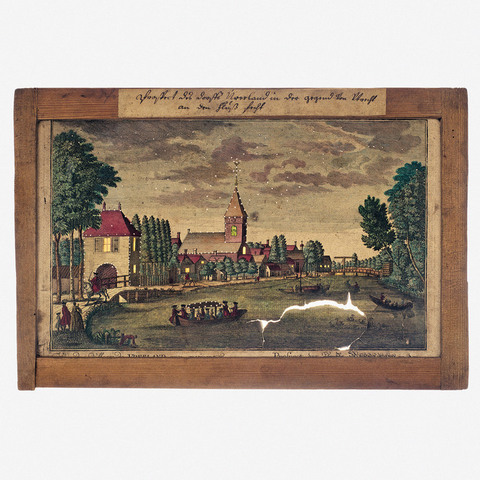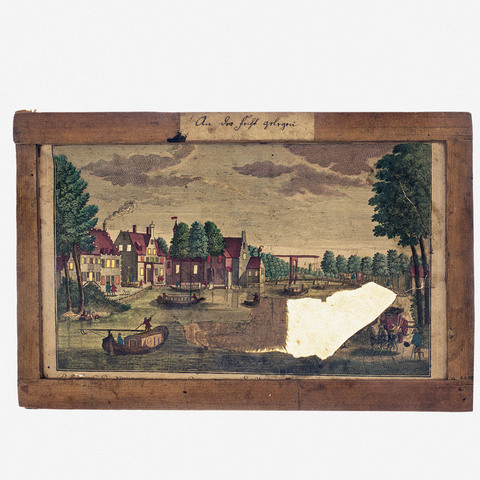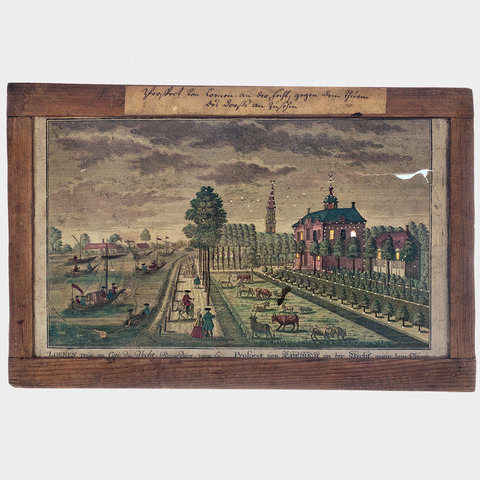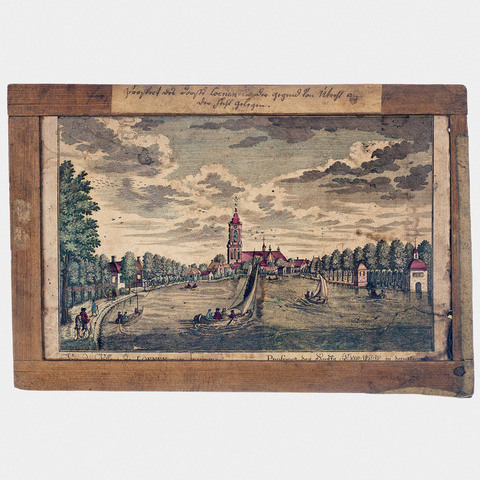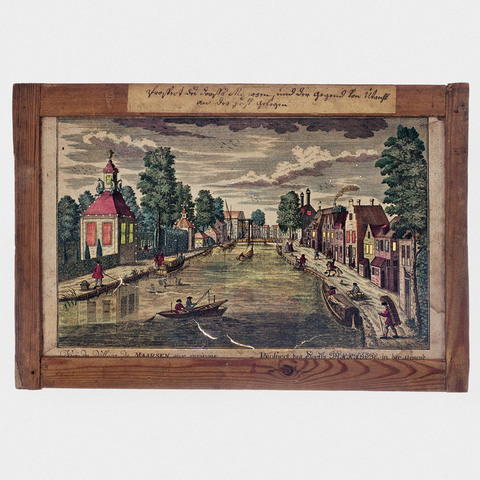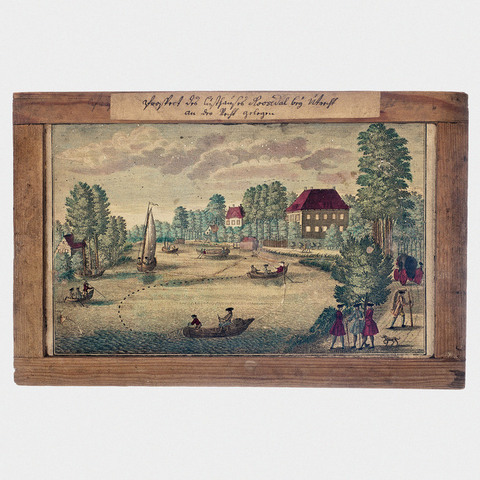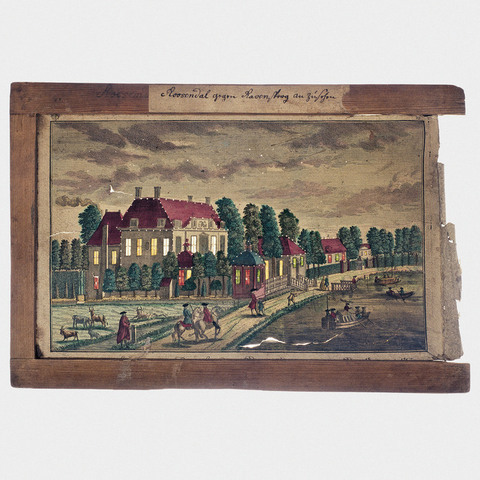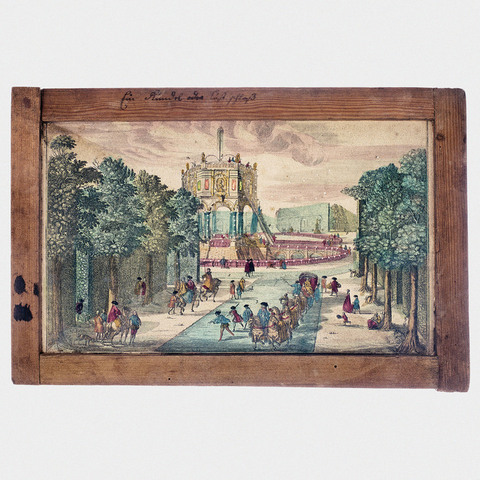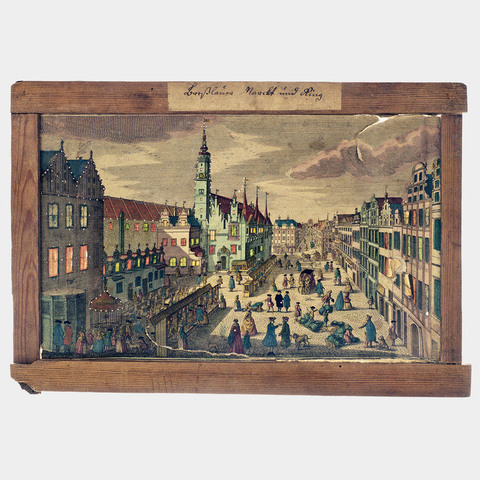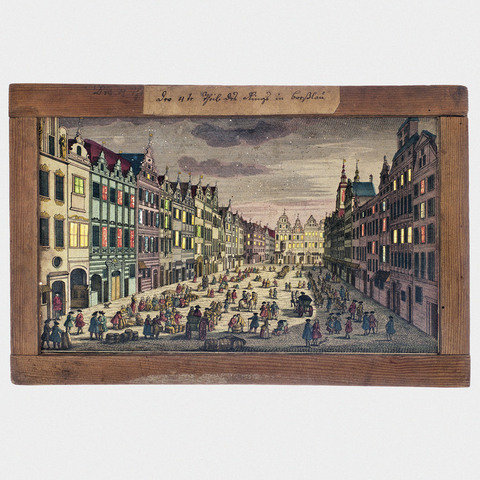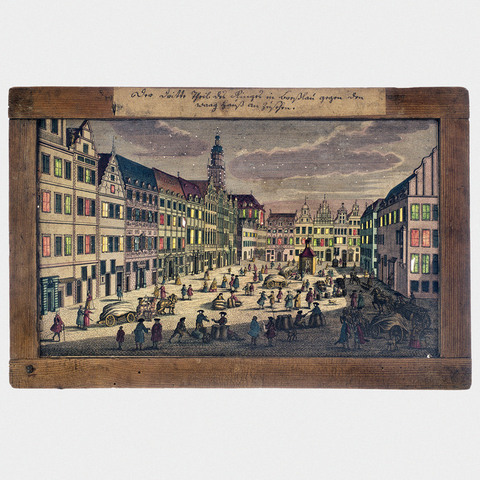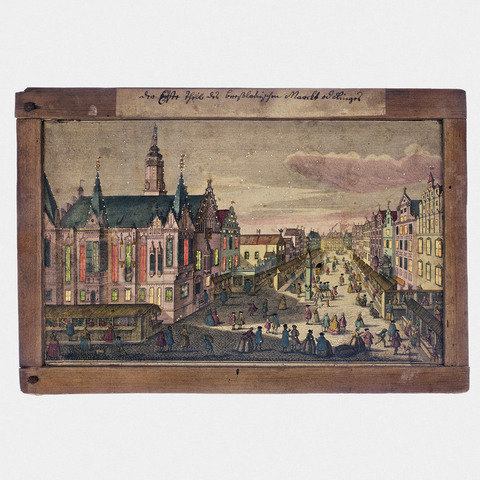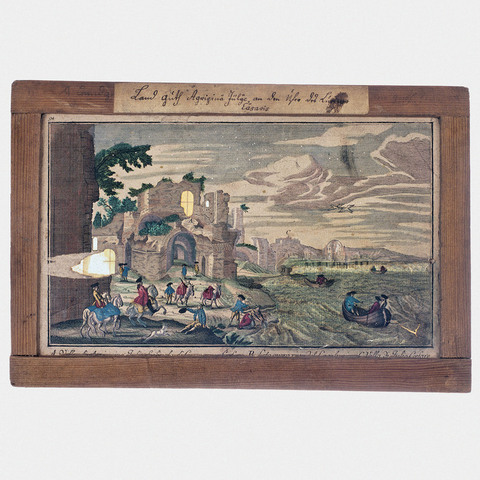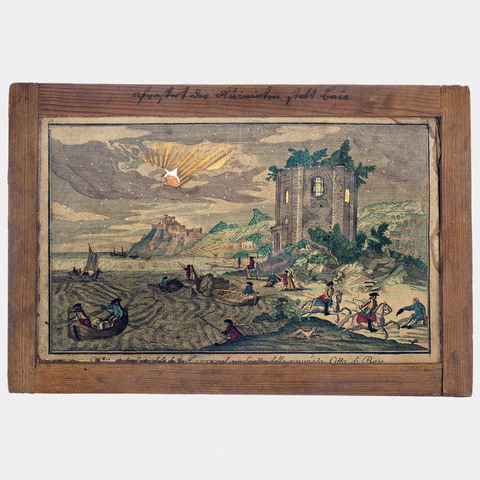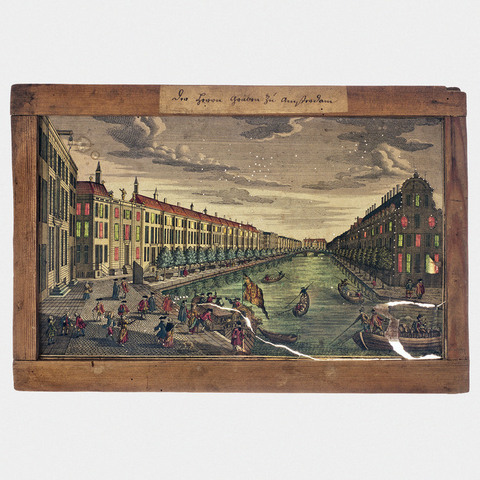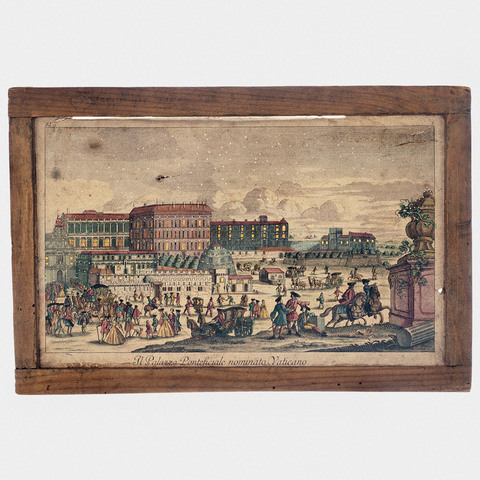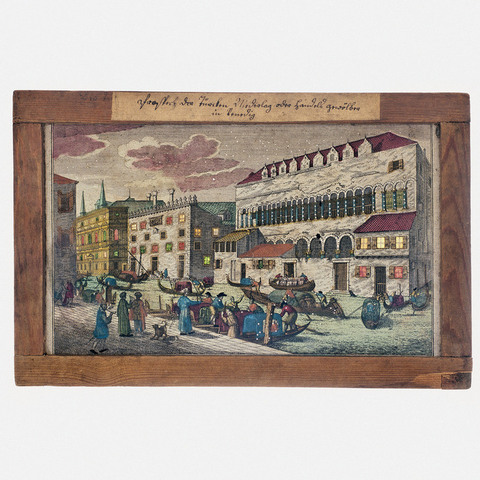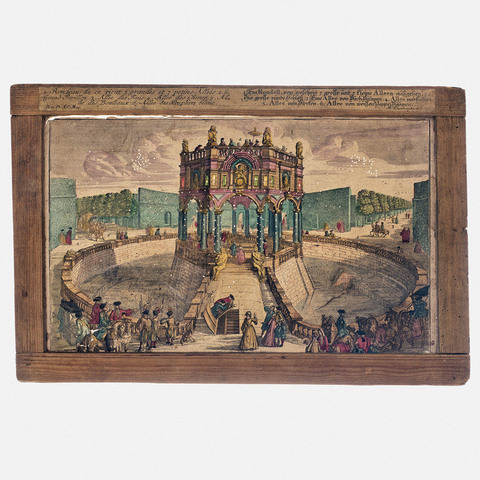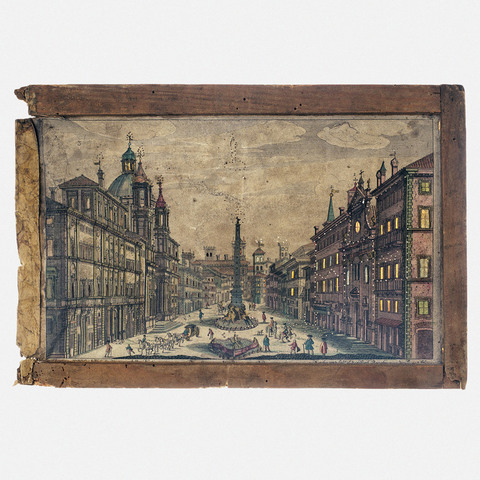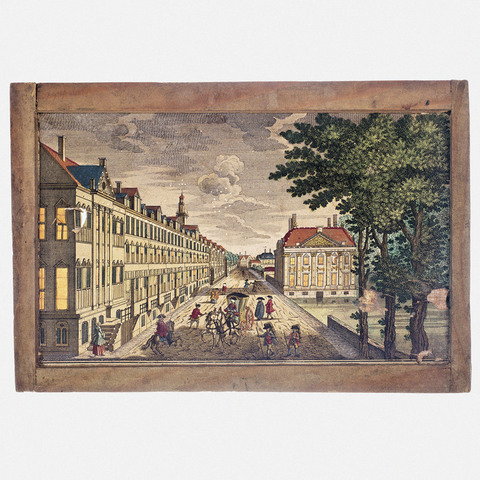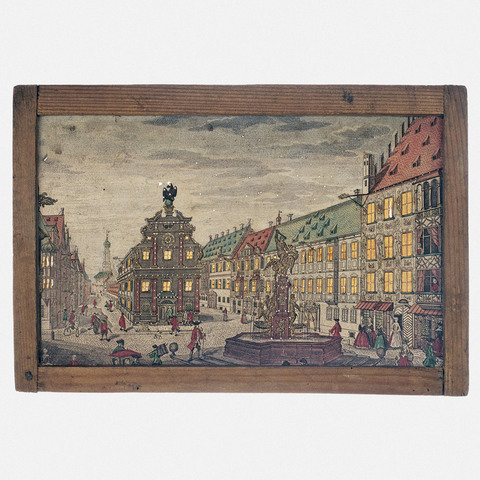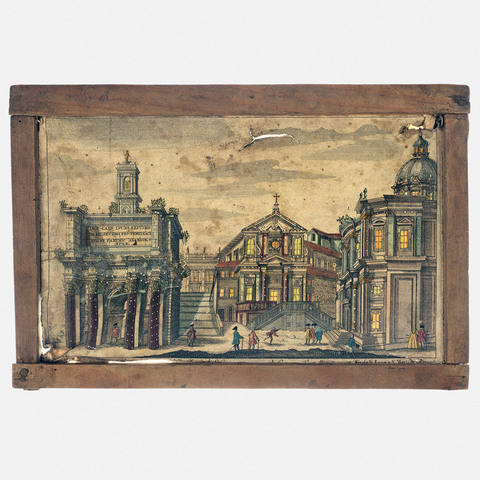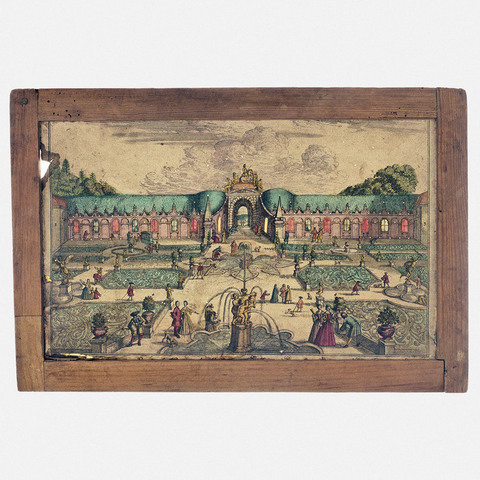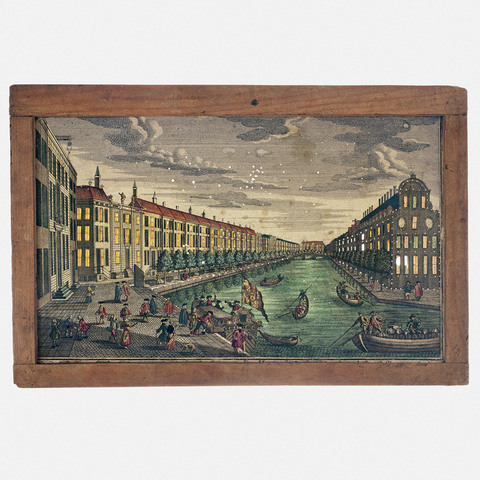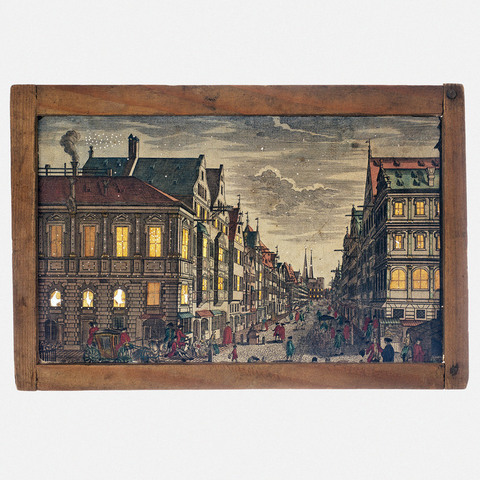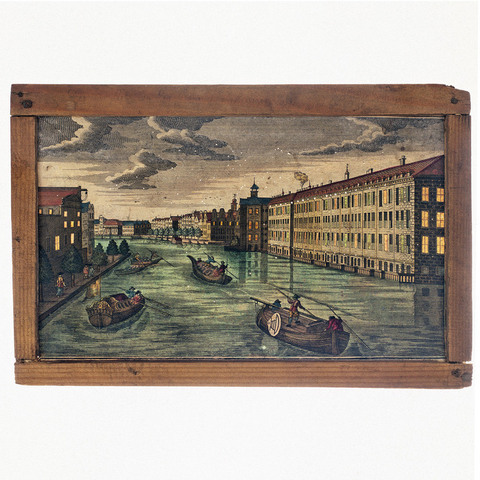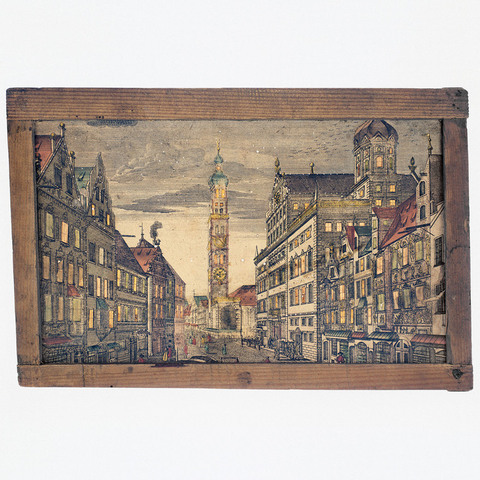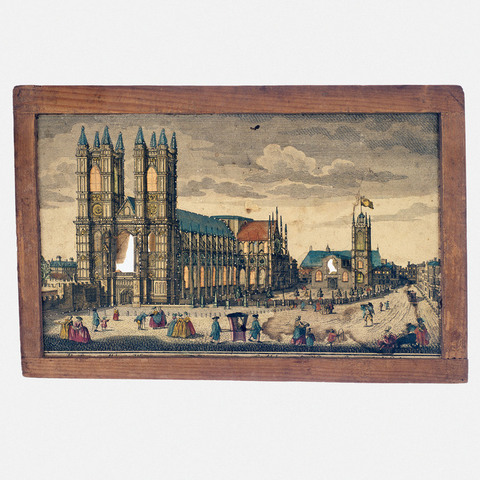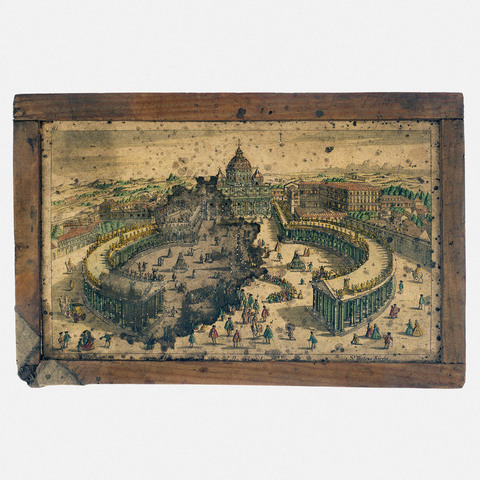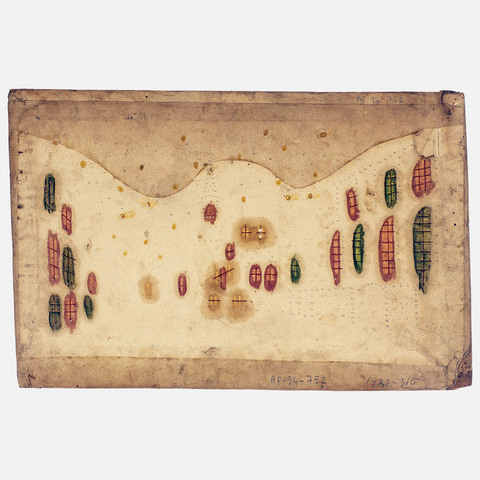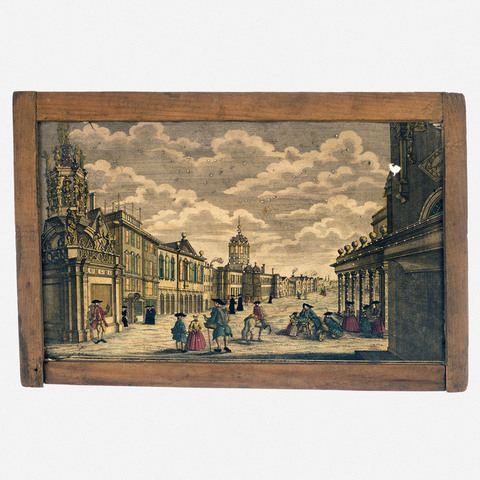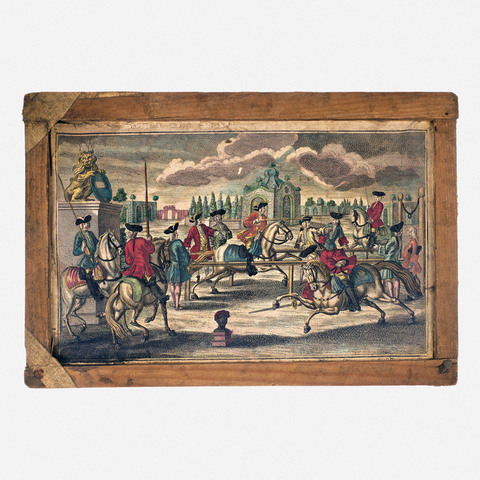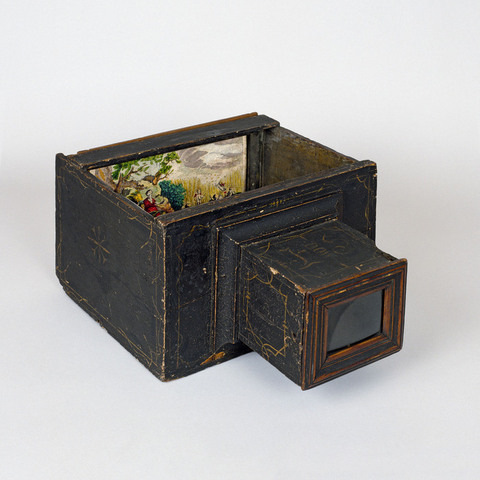Vue d'optique
Fiche détaillée
Type de l'appareil
gravure rehaussée de couleurs ; perforations pour effets lumineux ; renforcement de papier coloré au dos ; encadrement de bois
Auteurs
Informations non disponibles
Fabricants
Martin Engelbrecht
Augsbourg
Utilisateurs
Informations non disponibles
Distributeurs
Informations non disponibles
Sujet du modèle
Italie. Légende manuscrite sur le cadre : "Prospect des Adelsitzes Arricia Herzogtum des prinzen Chigi 12 Meilen von Rom gelegen" [Perspective de la terre noble d'Arricia, duché du prince Chigi, situé à 12 milles de Rome]. Légende imprimée sur la gravure
Objectif
Informations non disponibles
Taille de l'objet
Ouvert :
Informations non disponibles
Fermé :
Largeur : 34.1 cm
Hauteur : 22.2 cm
Diamètre :
Informations non disponibles
Taille de la boîte de transport
Informations non disponibles
Remarques
Va avec AP-94- 704.
Légende manuscrite sur le cadre : "Prospect des Adelsitzes Arricia Herzogtum des prinzen Chigi 12 Meilen von Rom gelegen" [Perspective de la terre noble d'Arricia, duché du prince Chigi, situé à 12 milles de Rome].
Légende imprimée sur la gravure : "1. Chiesa Collegiata dell' Assuntione di Maria Vergine. 2. Palazzo dell' Ecc.mo Sig. Prencipe. Veduta della Nobil Terra dell'Ariccia Ducato dell' Ecc.mo sigre Prencipe d'Agostino Chigi distante dodici maglia da Roma. Prospect des Adelsitzes von Arricia Herozthum des Prinzen Chigi, 12 meilen von Rom gelegen. 1. Collegiat Kirche von Maria Himmelfahrt. 2. Fürstlicher Pallast. C. Priv. S.C. Maj. Mart. Engelbrecht excud. A.V."
"Martin Engelbrecht (1684-1756), a native of Augsburg was the son of a colour merchant. He began his career as an artist by the attachment to a local publishing house but had by 1708 moved to Berlin where he was engaged in the designs after Eosander von Goethe of a the Silberbüfett im Ritterall at Berlin and of a porcelain cabinet in Charlotttenberg. Returning to Augsburg he was involved in illustrating a wide variety of works after various artist mainly on subjects connected with the decorative arts. However in 1711 Engelbrecht was again in Berlin working at a fine art publishers with his older brother Christian Engelbrecht (1672-1735). They decided to start their own independent publishing house at Augsburg in 1719 where they produce a wide variety of graphic works. It was with peepshows Martin Engelbrecht excelled having the unique position of no other publishing house or place of publication to compete against him. Engelbrecht was kept busy with the many other special graphics and employed two artists, Jeremias Wachsmuth (1711-1771) and Johann David Nessenthaler (1717-1766), to produce designs for the peepshows. Wachsmuths work can be found as early as 1731, and those by Nessenthaler starting from 1737. With Martin Engelbrecht's death in 1756, the business continued to thrive under the management of Engelbrecht's daughters and sons-in-law, and continued on well into the nineteenth century" (Marlborough Rare Books Catalog, List XLV, 2009. pp. 33-34).
Bibliographie
W. Day, Illustrated Catalogue of the Will Day Historical Collection, Londres, s.d.
[1934], p. 9.
